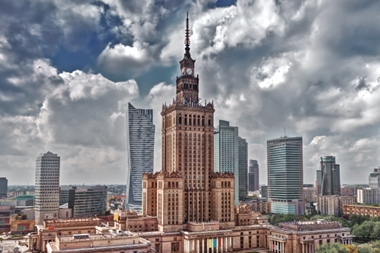Croatia’s mandatory second-pillar funds generated impressive returns in 2015 compared with many of their regional peers.
The Category B funds, which account for 98.6% of total membership, achieved an annual nominal return of 6.19% last year, albeit down from 11.36% in 2014, according to the Croatian Financial Services Supervisory Agency (HANFA), the sector’s regulator.
These medium-risk funds were the original vehicles set up in 2002 when Croatia launched the second pillar, and became the default option for those who did not exercise their choice when the lifecycle system came into effect in August 2014.
The new system introduced Category A high-risk funds open to all those with more than 10 years left to retirement, and low-risk Category C funds, open to all but compulsory for those with fewer than five years left to retirement.
The 2015 returns for these were 9.12% and 6.78%, respectively.
According to a recent press conference by the Association of Pension Fund Management Companies and Pension Insurance Companies (UMFO), since the start of the pension reform, the second pillar achieved an annual average return of 3.65% in real terms, with models suggesting the system could provide up to 44% of a retired member’s final pension.
High returns on sovereign Croatian bonds contributed to 2015’s positive results.
These securities account for the biggest share of second-pillar assets, ranging from 48.6% for Category A funds through 71.2% for Category B and 91.7% for Category C.
These returns will decline if Croatia maintains the economic growth it recorded in 2015 after six years of recession, forcing the funds to look at alternative bonds.
The Category A funds also had high holdings in shares and GDRs – 25% in domestic issues and 12.5% in foreign ones, with foreign equities generating the higher returns.
The respective holdings for B funds were 10.5% and 8.6%.
Share activity by the mandatory funds in 2015 included participating in major recapitalisations, notably those of the food producer Podravka, Port of Rijeka (the country’s largest port), the postal bank Hrvatska poštanska banka and tanker operator Tankerska Next Generation.
The new government, approved this January, appears set to call on the pension fund sector as part of its financing plans.
Damir Grbavac, president of the management board of Raiffeisen Mandatory and Voluntary Pension Funds Management Company, said: “We have established contacts with the new government, and it seems we are very much appreciated as potential investors in infrastructure, possible privatisations of listed companies in which the state has minority ownerships, and pending privatisations in general.
“Within that framework, discussions about Croatian motorways have been started again, but they are still in a very early phase.”
Total membership as of the end of December 2015 grew by 1.5% year on year to 1.73m, and assets grew by 1.2% in Croatian kuna terms to HRK74bn (€9.7bn), of which HRK25bn were investment earnings accumulated since the start of the second pillar.
In the case of the voluntary sector, returns for the six open-ended funds ranged from 2.07% to 6.88%.
Assets grew by 14.8% to HKR3bn, and membership by 7.5% to 236,948.
For the 16 closed-end funds in operation since the start of 2015, the returns ranged from 3.32% to 8.11%, with assets up by 14.3% to HRK681.2m, and membership by 20.3% to 28,776.








